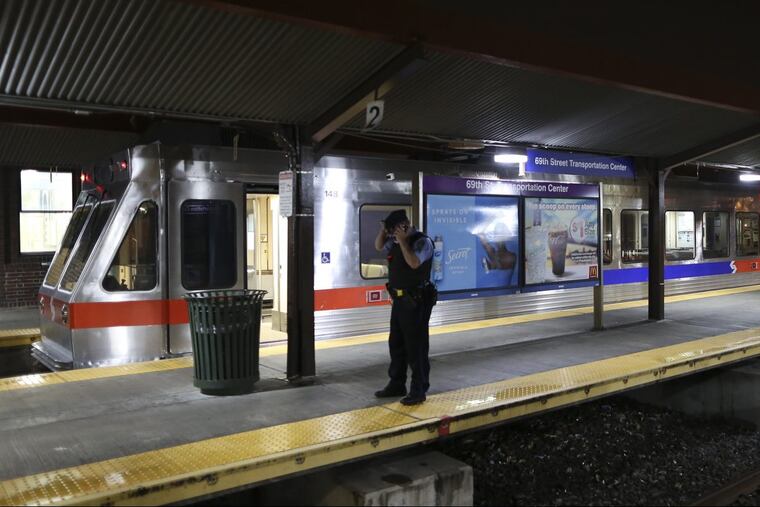Speed, slippery rails may have been factors in SEPTA crash
Warnings of speed and slippery rails both preceded a crash on the Norristown High Speed Line in August, according to a preliminary report on the crash released Tuesday by federal investigators.

Warnings about speed and slippery rails both preceded a crash on the Norristown High Speed Line in August, according to a preliminary report on the crash released Tuesday by federal investigators.
The operator of the light rail train told National Transportation Safety Board investigators that he had experienced slippery rail conditions before the crash Aug. 22 at the 69th Street Transportation Center. As he approached the terminal about 12:10 a.m., he tried to stop the train but slid through the stop signal and rammed an unoccupied train car at the terminal. The impact sent the train operator and 42 passengers to hospitals with injuries.
One of those passengers has initiated a lawsuit against SEPTA.
The preliminary report also stated that the operator received a warning he was traveling too fast from the train's onboard automatic braking system just before the crash.
SEPTA declined to comment on the report Tuesday.
Tom Kline and Bob Mongeluzzi, who are representing the man suing, Derrell Robbson, said the NTSB's report suggests a failure of both the operator and SEPTA's systems.
"The facts suggest operator and systemic error, although other potential causes cannot be ruled out absent a more complete investigation and determination," they said in a statement.
SEPTA does have equipment that treats rails to keep them from becoming slick, but it is typically deployed seasonally, in autumn to address slippery conditions caused by falling leaves. After the crash, SEPTA inspected the brakes on all cars used on the Norristown High Speed Line and found no problems.
The operator had run the route between 69th Street and the Norristown Transportation Center eight times during his shift before the crash, according to the NTSB report. He reported no problems during any of those trips. On his last trip, though, there was light rain, and the operator skidded past the Gulph Mills stop, forcing him to reverse the train to the platform.
He reported the incident to a SEPTA dispatcher, the NTSB reported, but his was the only slippery rail report of the night and no alert was transmitted to other operators.
Robbson got on the train that night after the Gulph Mills stop and has said the train overshot the Bryn Mawr platform as well. Eric Weiss, a spokesman for the NTSB, said federal investigators received information about only one missed station: the Gulph Mills stop.
Kline noted he did not think the NTSB has interviewed Robbson.
Less than a half mile from the 69th Street terminal, the train operator received a series of codes from the automatic train control system aboard alerting him to reduce his speed. The last track signal before the transportation center required him to stop.
Robbson also said he felt the train was moving too fast as it approached the terminal.
The operator told the NTSB that he did apply the brakes but that the train went through the stop signal before hitting the train car in front of it.
The NTSB report is a preliminary document establishing the facts of the crash. It will be months before a fuller accounting of events is provided and about a year before the federal agency releases its conclusions.